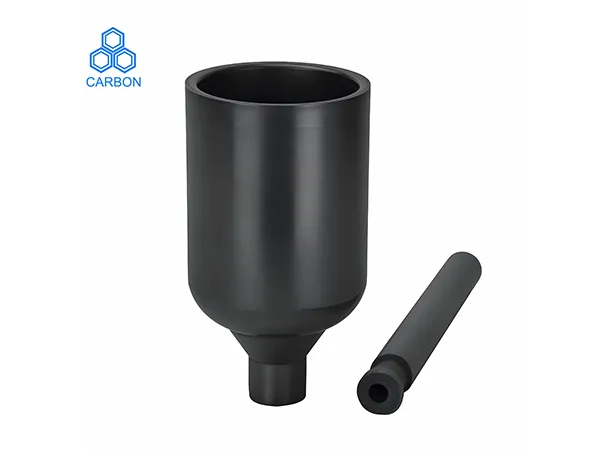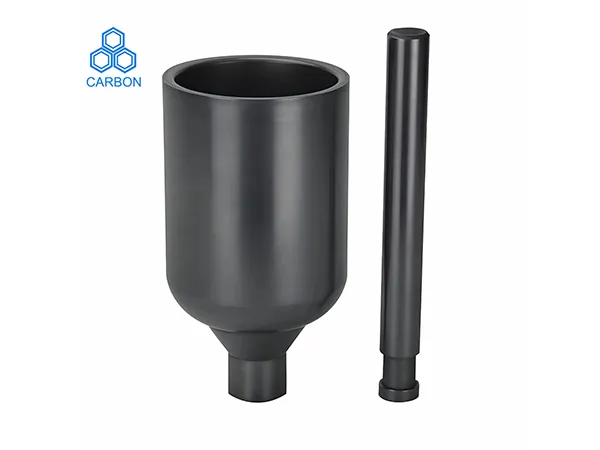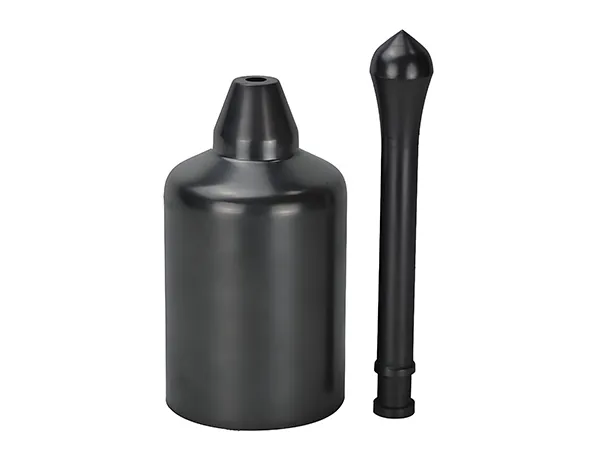Time: 2025-07-16 07:22:50 Source: Cangzhou Carbon Technology Co., Ltd.
Graphite crucibles are highly valued for their ability to withstand extreme temperatures, making them suitable for various high-temperature applications like melting metals.

Generally, they can withstand temperatures ranging from 2000°C (3632°F) to 3000°C (5472°F). Some sources even state a maximum temperature of up to 3100°C.
It's important to note that while graphite itself has a very high melting point (sublimes around 3650-3697°C), the actual temperature tolerance of a graphite crucible can depend on several factors:
Purity of the graphite: Higher purity often allows for higher temperatures.
Design of the crucible: The specific construction and any binders or additives used can affect performance.
Usage conditions: Graphite can oxidize in the presence of oxygen at temperatures above 450-500°C. Therefore, for very high-temperature applications, graphite crucibles are typically used in inert atmospheres (like argon or nitrogen) or vacuum environments to prevent degradation.

This is the most critical factor in determining a graphite crucible's maximum temperature.
1. In an Oxidizing Atmosphere (e.g., Air)
When heated in air, graphite reacts with oxygen and literally burns away, releasing carbon dioxide (CO₂) and carbon monoxide (CO). This process starts to become significant around 450 - 500°C (842 - 932°F).
To counteract this, most graphite crucibles intended for use in air (like in typical hobbyist or foundry furnaces) are glazed and/or made with other materials to protect the graphite.
Clay-Graphite Crucibles: Max ~1100°C (2000°F). These are common for melting non-ferrous metals like aluminum, brass, and bronze. The clay binder and protective glaze help resist oxidation, but they will still degrade with each use.
Silicon Carbide (SiC) Graphite Crucibles: Max ~1400°C (2550°F). The silicon carbide content dramatically improves oxidation resistance, strength, and thermal conductivity. They are a significant upgrade and can handle copper, silver, gold, and even some cast iron melting in air. Above this temperature, the protective glaze and the SiC itself will begin to break down rapidly.
Key Takeaway: For any crucible used in air, you are fighting against oxidation. The lifetime of the crucible is directly related to the temperature and duration of your melts.
2. In an Inert Atmosphere or Vacuum
When you remove oxygen, the primary limitation (oxidation) is gone. This is where graphite truly shines and can reach very high temperatures. These crucibles are typically made of high-purity isostatic graphite and are used in vacuum or inert gas (Argon, Nitrogen) furnaces.
Pure/Isostatic Graphite Crucibles: Max ~2500°C (4532°F). While graphite's sublimation point is higher, its mechanical strength begins to decrease significantly above this temperature. It becomes soft and can deform under the weight of the molten metal. This range is used for melting high-temperature materials like silicon, platinum group metals, and specialty alloys.

Summary Table
|
Crucible Type |
Max Temp in Air (Oxidizing) |
Max Temp in Inert/Vacuum |
Common Uses |
|
Clay-Graphite |
~1100°C / 2000°F |
Not typically used |
Aluminum, Brass, Bronze |
|
Silicon Carbide (SiC) Graphite |
~1400°C / 2550°F |
Can be used, but pure graphite is better |
Copper, Silver, Gold, Cast Iron |
|
Pure Isostatic Graphite |
~500°C / 932°F (will burn away) |
~2500°C / 4532°F |
Silicon, Platinum, Research, Vacuum Melting |
In conclusion, the practical temperature range for a graphite crucible is not one number but a function of its composition and its environment. For use in air, it's typically 1100-1400°C, while in a vacuum or inert atmosphere, it can be as high as 2500°C.